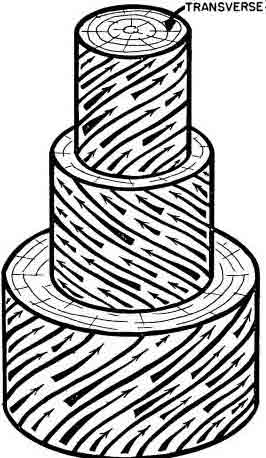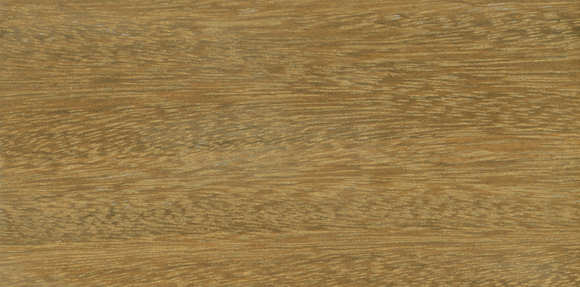open main page for all woods open page 2 for articles
INTERLOCKED GRAIN
Normally, the fibers in a tree trunk run parallel to the centerline of the tree, but under some conditions the tree will twist during growth and the result is a spiral orientation of the fibers up the trunk. When this spiral changes direction from year to year, the result is what is called "interlocked" grain and it is the primary reason for such figures as "ribbon stripe" (in quartersawn stock), "mottled", "curly", "fiddleback" (an extreme case of curly) and others. It also is frequently accompanied by a more shiny surface than is otherwise the case for non-interlocked samples of the same species.
Examples:

illustration of interlocked grain

verawood with one of the best pics I've ever gotten of interlocked grain. Both levels of enlargement are present

closeup of a verawood plank with very clear interlocked grain

sucupira plank showing interlocked grain

sapele veneer showing interlocked grain, although it's not as clear as in the two samples above.

ipe showing interlocked grain
%20interlocked%20grain%201s.jpg)
A split piece of black gum (Nyassa sylvatica) loaned to me by Mark Peet whom I thank for this and other contributions to the site. This piece is amazingly interlocked and Mark tells me the owner found it almost impossible to split the piece. The channels are caused by the way the interlocked wood splits (if and where it ever DOES split). I can attest from personal experience that heavily interlocked grain like this can make it damned near impossible to split such a piece with anything less than a hydraulic ram that goes all the way from one end to the other).






%20interlocked%20grain%201s.jpg)